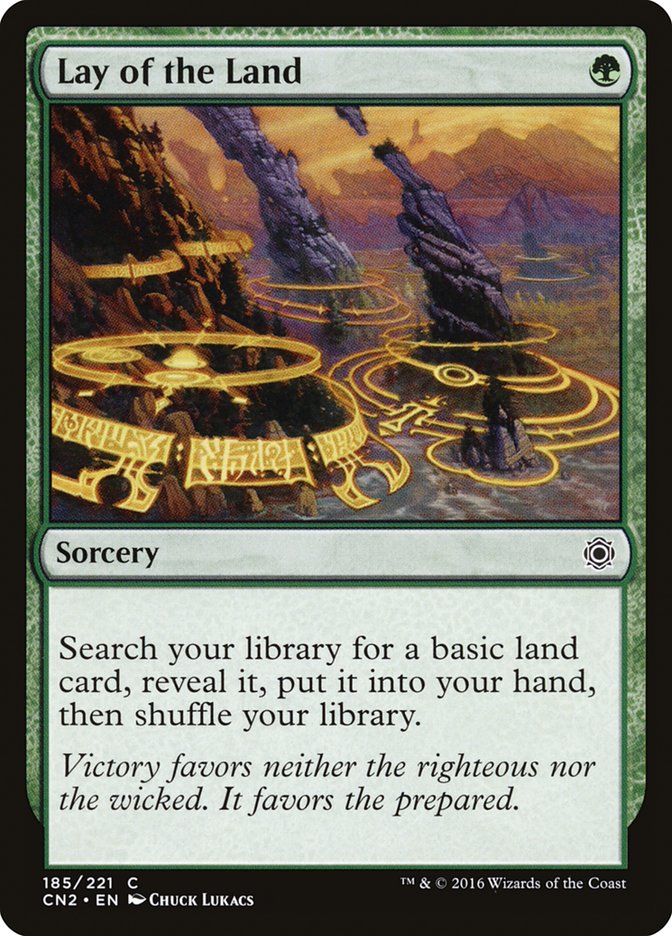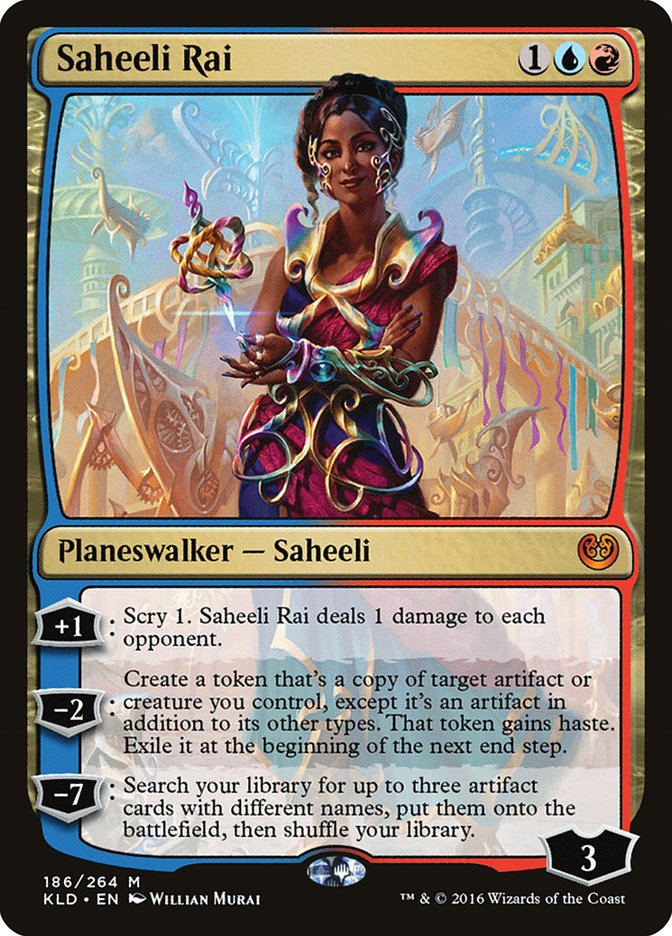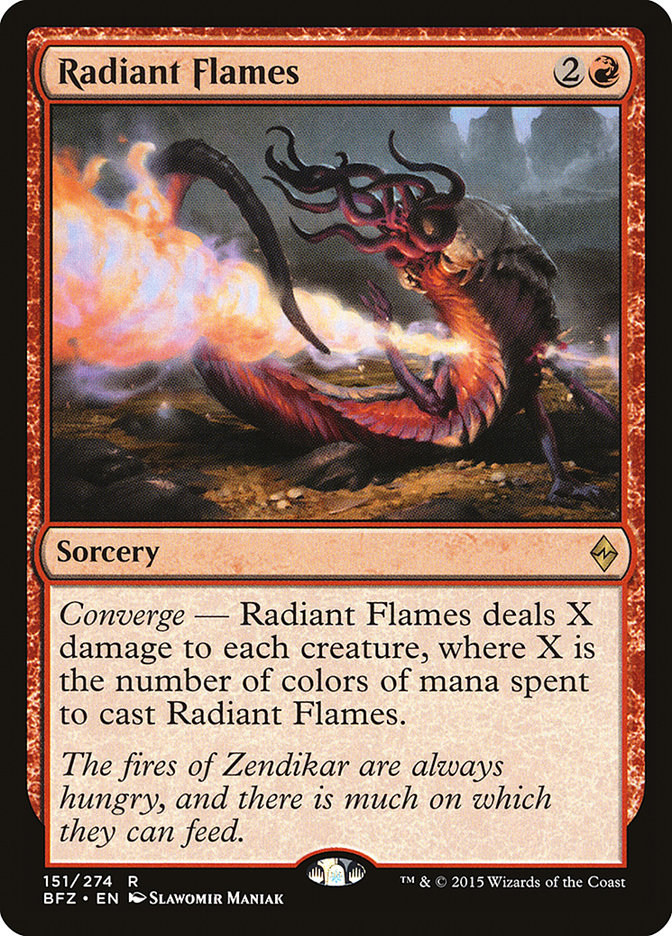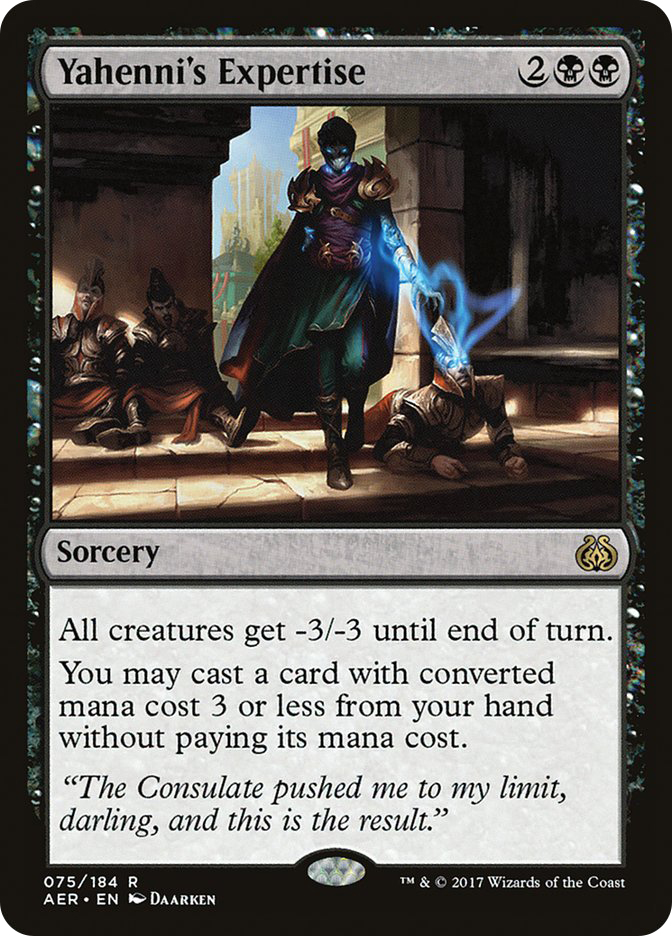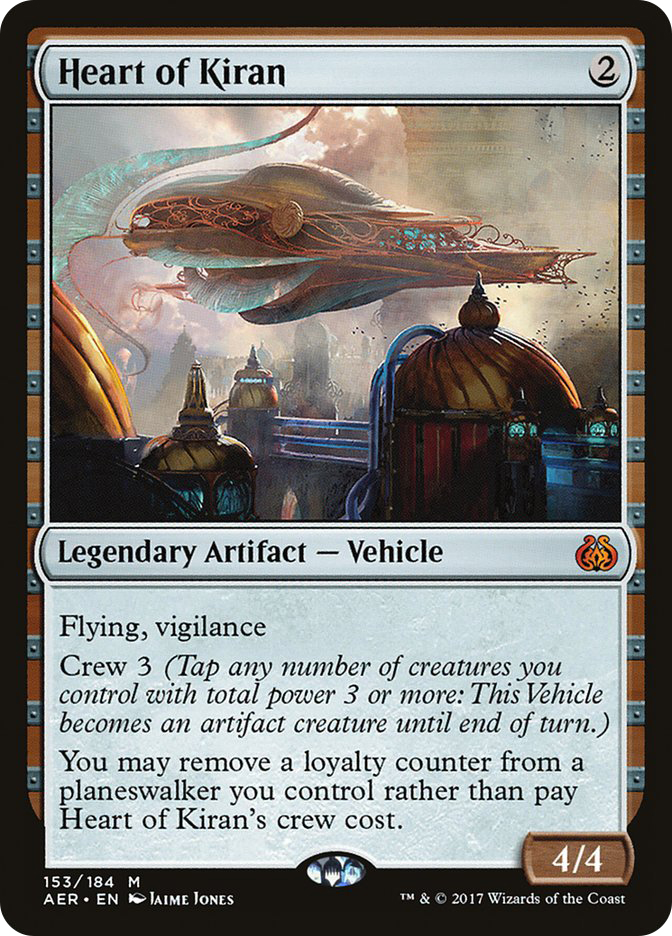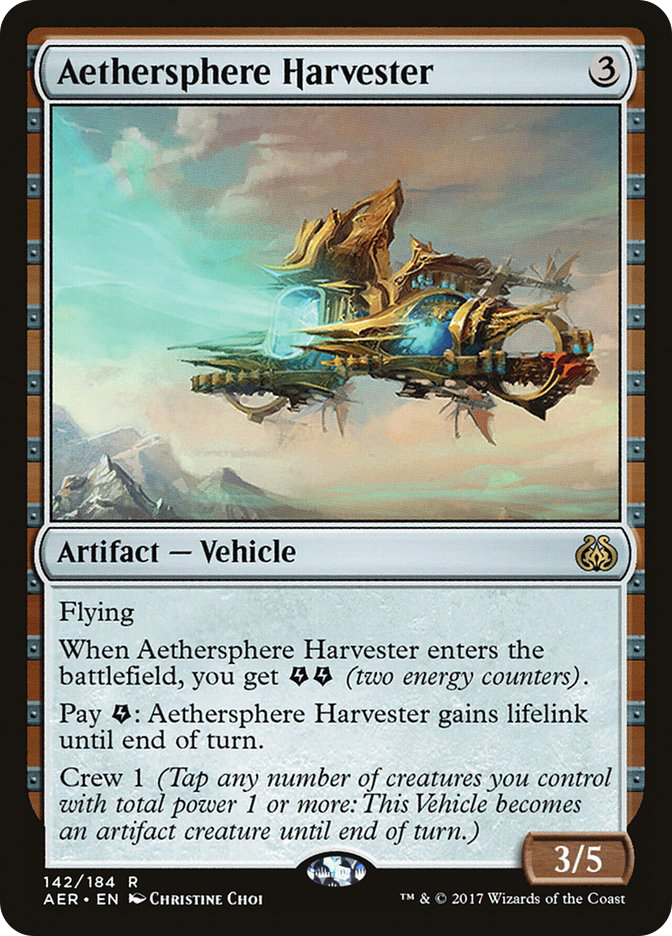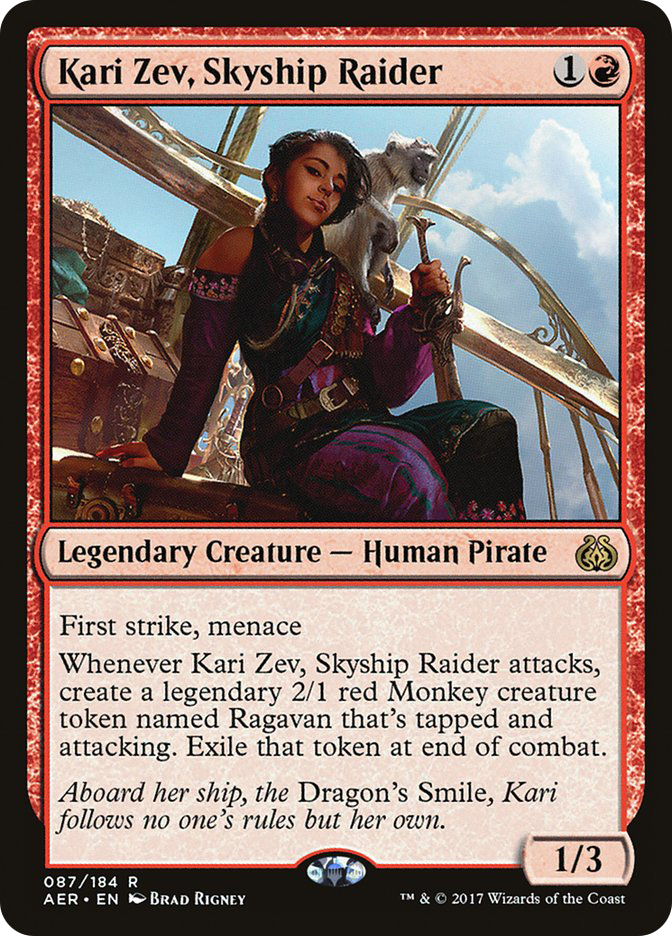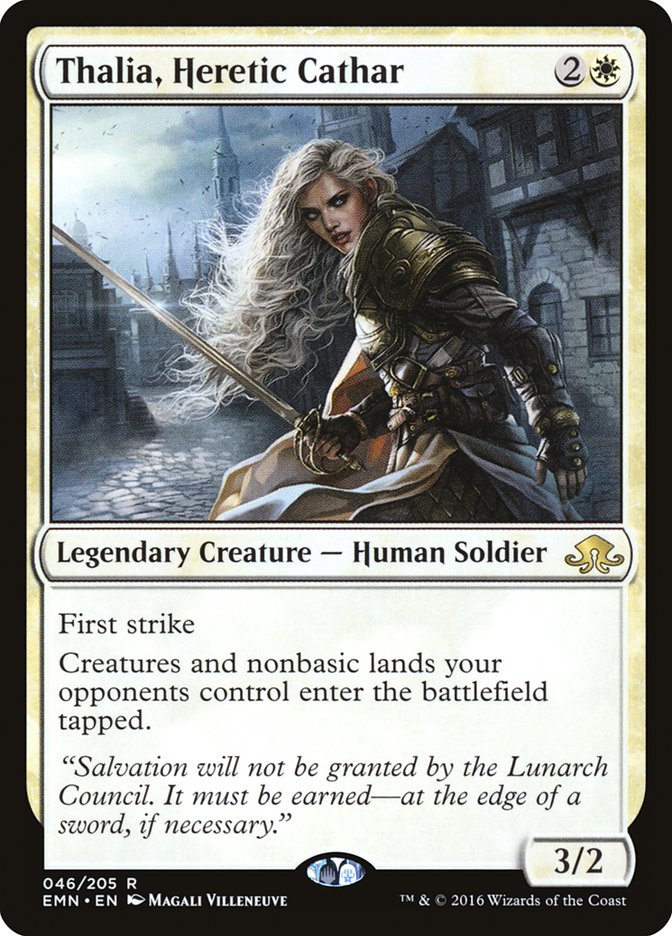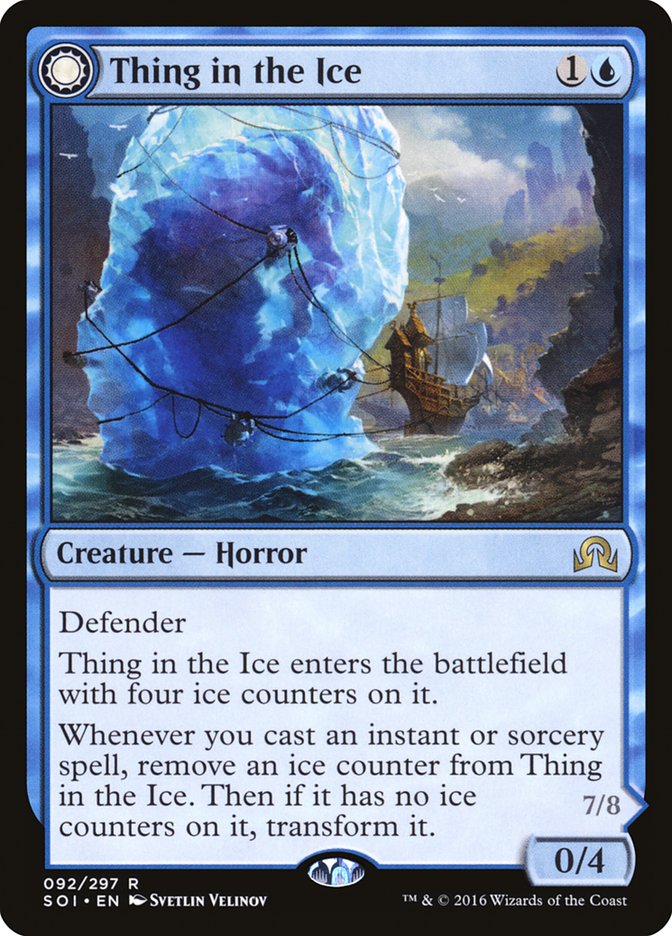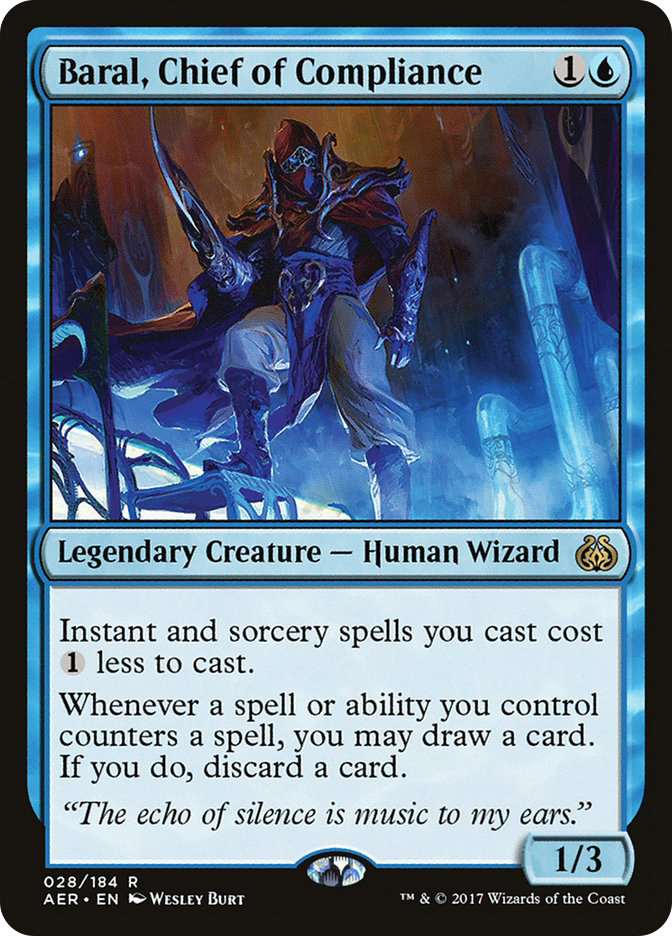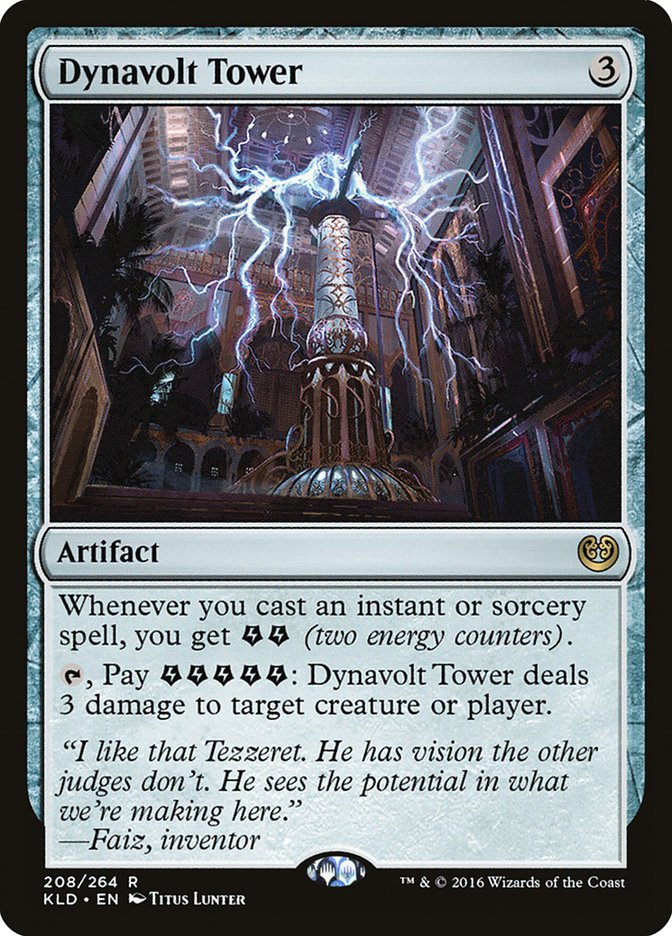The winter release is typically met with a fanfare that the set cannot possibly live up to. It’s coming into an established format with well-tuned decks, and while eventually a new archetype or two may spring up, for the most part, the new cards bolster existing decks.
Not so this time around. The recent bannings have brought Standard to a new frontier (no, not that Frontier) for this time of year. The upcoming tournaments are going to function much more like those after the fall release, where rotation leaves the metagame virtually unknown and the new set is poised to have a greater effect on the format.
In particular, the trio of Smuggler’s Copter, Reflector Mage, and Emrakul, the Promised End represented a huge portion of what was an atypically narrow Standard metagame, so while the natural reaction is to search for direct replacements for these cards in the various decks they elevated, I don’t see W/U Flash, Aetherworks Marvel, or B/G Delirium decks surviving in anything closely resembling their former forms.
So what are all of our new brews supposed to be tested against to see if they will be strong enough for #SCGCOL?
That’s the million-dollar question that many players foolishly fail to ask themselves before diving head-first into brewing new decks. While I can be as guilty of this as the next player, I’ve made a concerted effort in recent years to focus my early testing on the more obvious decks that jump off the page, since those are the decks that the majority of players will test with and against. The best-performing of those archetypes will form the basis for the early metagame, and finding it quickly gives you a significant advantage with which to tailor your early testing.
Notably, there is a common pattern among these early top contenders. Since evaluating new cards, themes, and mechanics is historically difficult, the best early decks tend take comparatively more from existing sets and comparatively little from the newest set. They are decks with established shells (perhaps fringe decks from a previous season or synergy decks that needed one more piece) that received significant upgrades from the new set. As a result, you’ll find all of these decks at least somewhat familiar, but you’ll have to become intimately familiar with them if you want to succeed in the opening weeks of the format.
As we have more time to examine the new cards and explore different options for them, these initial upgrades may not be strong enough for a deck to last well into the new format, but as I’ve noted many times in my writing, Magic tournaments are about having the best deck for the weekend, not the deck that’s still around three weeks later.
So here are the three decks that I think will define the format from #SCGCOL to the Pro Tour and how you can effectively prepare for them.
The Default
Creatures (7)
Planeswalkers (4)
Lands (26)
Spells (23)

Torrential Gearhulk is one of the big winners of the bans, seeing as the decks it likes to be in lost nothing and they were already competitive in the format, albeit not on the top tier. The core of card draw and Torrential Gearhulk is supported by a hugely customizable removal suite so feel free to play with this list depending on the matchups you expect.
Jeskai Control also forms the most natural home for the Saheeli Rai / Felidar Guardian combo, since Saheeli Rai is a reasonable card in the deck and both pieces can rebuy Torrential Gearhulk for value.
The “New Splinter Twin” seems rather divisive right now, with some players touting it as format-defining and others finding it vastly overrated. Count me in the former camp, with the clarification that I don’t think a deck being format-defining is necessarily ban-worthy. The threat of dying out of nowhere as early as turn 4 is always going to be powerful and forces you into awkward play patterns that a control deck like this easily capitalizes on.
To understand how, you have to consider that the chief strategic weakness of control decks is their lack of pressure. Control decks don’t inherently limit what their opponent is capable of doing; they simply work to have the right answers at the right time and overpower their opponent in a longer game. Most successful strategies against control rely on this fact to execute their gameplan.
For example, you can deploy a stream of hard-to-answer threats like planeswalkers, Vehicles, and recursive creatures like Scrapheap Scrounger meant to overload their removal and end the game while they sink tempo into card draw spells in order to find the right answers. In order to execute this, you often need to work the game to a point where you can cast two key threats in one turn and overload their countermagic as well, but tapping out in the mid-game now leaves the threat of dying on the spot.
Trying to race the combo with a swarm of cheap threats turns you into a linear deck that control decks can easily answer with cheap sweepers like Radiant Flames and Yahenni’s Expertise. It’s going to take a very specific set of cards that can address both halves of this deck in order to combat it effectively. As you’ll see, the other two decks I like in the early format have that set of cards.
But just as important as having the right deck, playing against this deck is going to test your nerve. The threat of dying instantaneously is powerful and often causes players to play more conservatively than they should; no one wants to risk losing so early in the game. So when your opponent taps out for Saheeli Rai on turn 3 and you don’t have the means to remove it immediately, do you hold up a removal spell or tap out for your own threat?
More often than not, you should be tapping out and crossing your fingers. If you play into the fear, the advantage of Saheeli Rai, Glimmer of Genius, and Torrential Gearhulk will trump any offense you can muster as you continue to leave up mana for a combo that may never come. This is a classic example of playing not to lose versus playing to win, and you need to choose the latter and accept that you’ll be burned some portion of the time.
Of course, deck design plays into how often you’ll find yourself in that spot. Take the VS video from which I pulled the above list. The B/G Counter Aggro deck I was playing was trying to be a bigger, more powerful aggro deck, but in this matchup, the diminished speed played right into Brad’s hands. I wasn’t able to get ahead early enough to apply pressure to Brad’s life total while being able to leave open answers to the combo. As much as I like Rishkar, Peema Renegade, I think it’s a poor size for this matchup, which will keep it from performing well in the early weeks of the format.
Last, it’s important to realize that this deck can sideboard out the combo if you overload on answers to it, just as Splinter Twin used to do in Modern. Keep this in mind, especially during Game 2, and bring out your weak answers for more threats when appropriate.
The Aggro Deck
Creatures (27)
- 4 Expedition Envoy
- 4 Thraben Inspector
- 4 Thalia's Lieutenant
- 4 Town Gossipmonger
- 3 Hanweir Garrison
- 3 Thalia, Heretic Cathar
- 1 Metallic Mimic
- 4 Kari Zev, Skyship Raider
Lands (23)
Spells (10)

Disappointed with the slower green-based aggressive decks, I set my sights smaller and found what I think will be the best aggressive deck in Week 1. The darling tribe of Shadows over Innistrad hasn’t had much luck since those hairy Dwarves from Kaladesh started hanging around, but I’m of the opinion that losing their best Vehicle will slow the Dwarves down more than most are expecting, no matter how glorious their beards may be.
Heart of Kiran and Aethersphere Harvester are powerful cards and I expect they will see some play, but they don’t fit quite like Smuggler’s Copter in a more aggressive deck. You need a more consistent two-drop to fill that slot, and it just so happens that one of the best aggressive creatures in Aether Revolt is a two-mana Human.
I was initially underwhelmed by Kari Zev, Skyship Raider. It just seemed too easy to contain the Ragavan token with a blocker and absorb the one point, but it has been impressive in my testing. Against control decks, it provides a sizable clock and gives the deck another three-toughness creature in addition to Incited Rabble and Hanweir Garrison that can help you against sweepers.
Smuggler’s Copter being the single most important threat to contain against aggressive decks has made sweepers historically poor, so they should be more present than they were before. Radiant Flames and Yahenni’s Expertise both look to make life miserable for swarming aggro decks, but W/R Humans has plenty of Anthems between Thalia’s Lieutenant, Metallic Mimic, Always Watching, and Gideon, Ally of Zendikar, so having creatures start on three toughness makes it easy to boost them to the key mark of four and insulate you from what would otherwise be the best cards against you.
W/R Humans also has access to answers to Felidar Guardian that fit naturally into its gameplan, which is going to be critical for any linear deck to have success in those matchups. Shock always disrupts the combo by targeting the opponent and redirecting damage to a Saheeli Rai on one loyalty, Harnessed Lightning needs only the help of a single Aether Hub to take down the Felidar Guardian itself, and Thalia, Heretic Cathar is a permanent answer, letting you apply pressure without fear of dying on turn 4.
This version of Humans is a little bigger than previous iterations since some of the powerful one-drops left in rotation and replacing them with Village Messenger is not something I am interested in doing. That said, it’s still plenty fast and will consistently kill around turn 5 under light disruption, so you have to be prepared for it.
This is the part of the gauntlet that will keep your brews honest. If you test too much against Jeskai and slow your deck down to beat Torrential Gearhulk, then Thalia’s Lieutenant and company are going to capitalize. It seems like every set we say that aggro decks always dominate in Week 1, and yet every set countless players throw some sweepers and cheap removal in their sideboards and call it a day. Don’t be that person.
The Dark Horse
This last list is the one I have the least experience with thus far and as a result is the one I’m least confident in, but I think it has the tools to be a top deck in the format, especially given the recent bans.
Creatures (9)
Lands (24)
Spells (27)

Noted Izzet connoisseur Todd Anderson wrote aboutthisdeckandhadasimilarlist and I agree with much of what he said, although the key realization he had was in the renewed power of Thing in the Ice in the wake of Reflector Mage’s banning. The overpowered Man-o’-War made investing any amount of time into Thing in the Ice too risky a proposition to maindeck them, especially in a creature-light deck that would leave it vulnerable to otherwise dead removal as well.
But with that threat gone and the printing of Baral, Chief of Compliance as a great addition to this deck, we can move to a more creature-heavy list with the option of sideboarding into a more controlling list in matchups where Thing in the Ice and/or Baral, Chief of Compliance aren’t at their best. The creatures also make the deck less reliant on Dynavolt Tower itself, which is a necessary asset in a format where most sideboards will have Fragmentize, Release the Gremlins, Natural State, and the like.
Relative to Todd’s list, I am much more concerned with answering the combo, including some Disallows in the maindeck and opting for Shock over Galvanic Bombardment. The latter is a difficult decision to make, as I’d much rather have the more versatile removal spell, so if some counterspells and the threat of Dynavolt Tower are enough to answer the combo, I’ll gladly switch. I’ve been moving back and forth between the two, but for Week 1, I’d rather be overprepared for Felidar Guardian than underprepared.
I’m also much less keen on Cathartic Reunion and Tormenting Voice. I still include the latter, but even with the diminished role of Spell Queller in the metagame, I’d rather play Anticipate than another card filtering spell. This leaves me without access to Fiery Temper, but that’s a sacrifice I’m willing to make.
I like that Dynavolt Tower operates in a unique space where it’s obviously going to excel against creature decks, but as control decks incorporate Saheeli Rai and Felidar Guardian, it ceases to be a liability against them. It also gives you a cohesive, proactive gameplan you can execute against rogue decks, while you have the ability to pivot into a more reactive role when necessary. I certainly don’t expect it to be as popular as the first two decks in this list, especially because finding the right mix of cantrips, removal, counterspells, and creatures is going to be difficult for Week 1, but I am expecting it to overperform its numbers in the metagame until others take note.
Unless the Felidar Guardian combo vastly underperforms, this is going to be a rough metagame for midrange decks. Their early threats don’t line up that well against the present removal and tapping out on turns 4 through 6 for more powerful threats is more dangerous than it has been in years. Finding the right combination of cards to compete against Torrential Gearhulk, Thalia’s Lieutenant, and Felidar Guardian is going to be very tough, so midrange pilots will have to pick their poison and hope their matchups come up favorably.
As the metagame settles down, it will be interesting how decks with the combo metagame against the rest of the format, perhaps opting to sideboard it or remove it entirely when the format is too hostile. Such fluctuations will open windows where powerful midrange decks can have success, but right now things don’t look good.
Whether you’re happy or not about the recent bannings, I think we can all agree that it’s sweet to have another new metagame to crack and I’ll be following closely this weekend to see where my predictions are right and where I’ve misstepped in evaluating the format. What do you expect?


